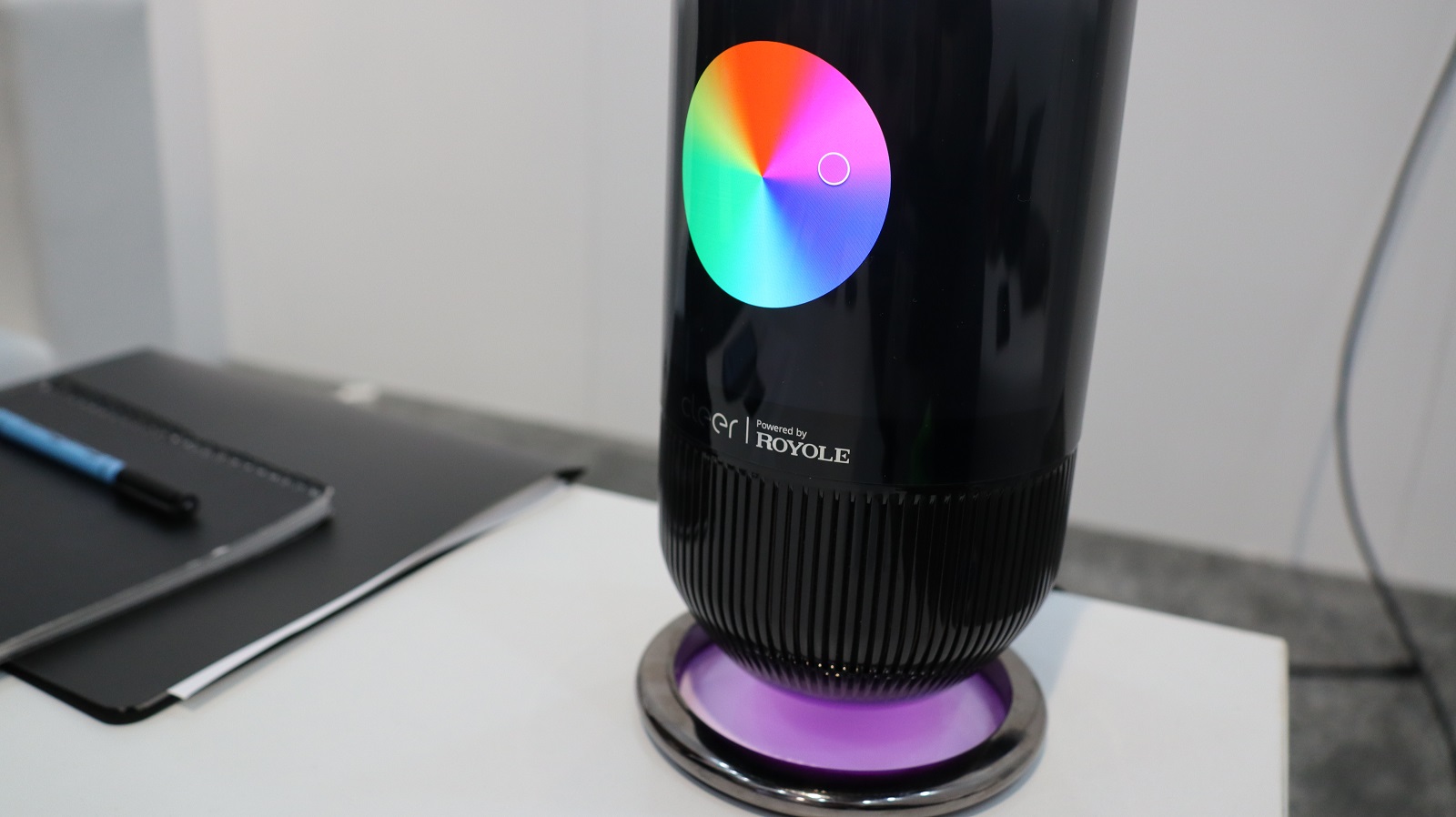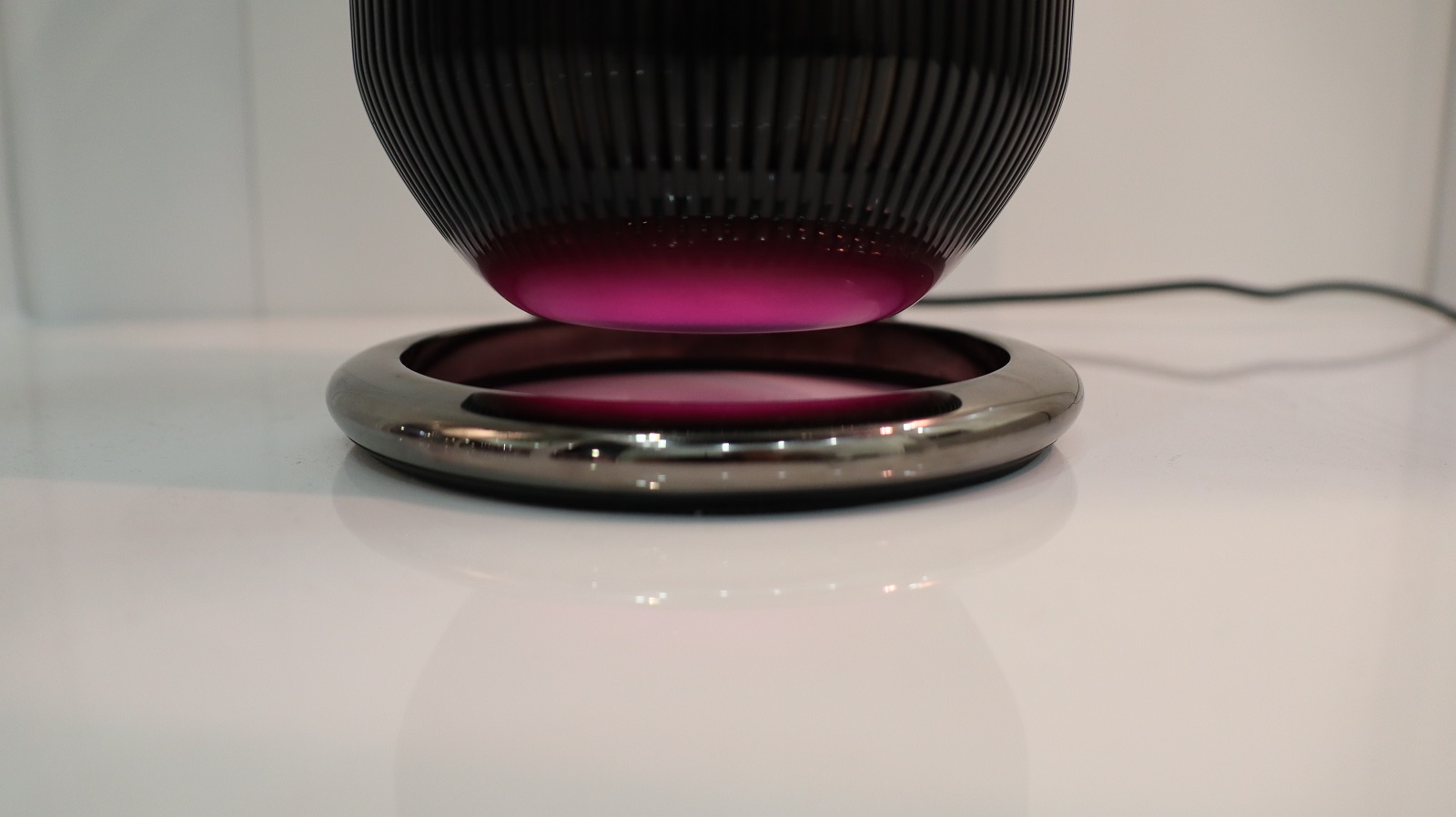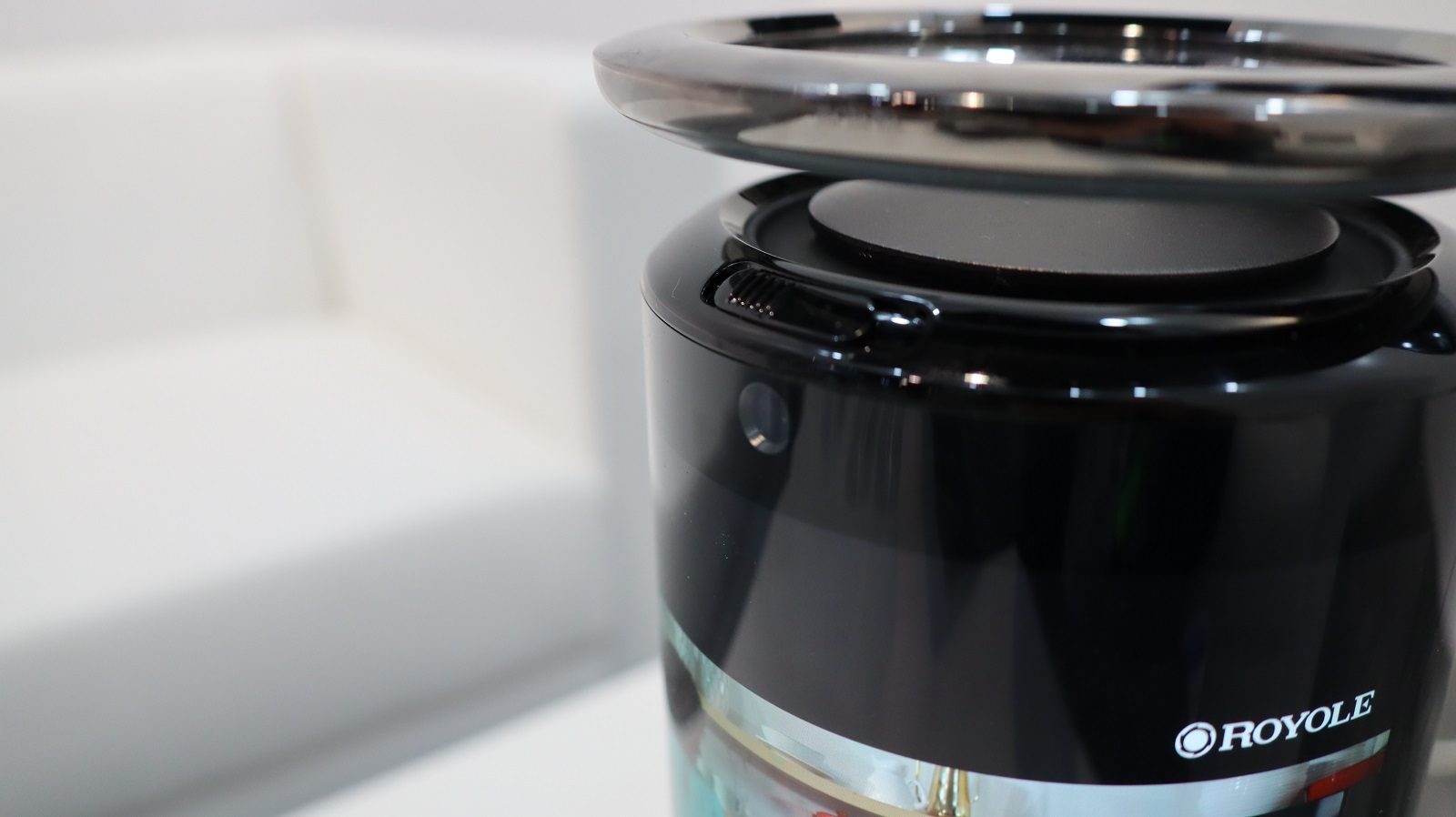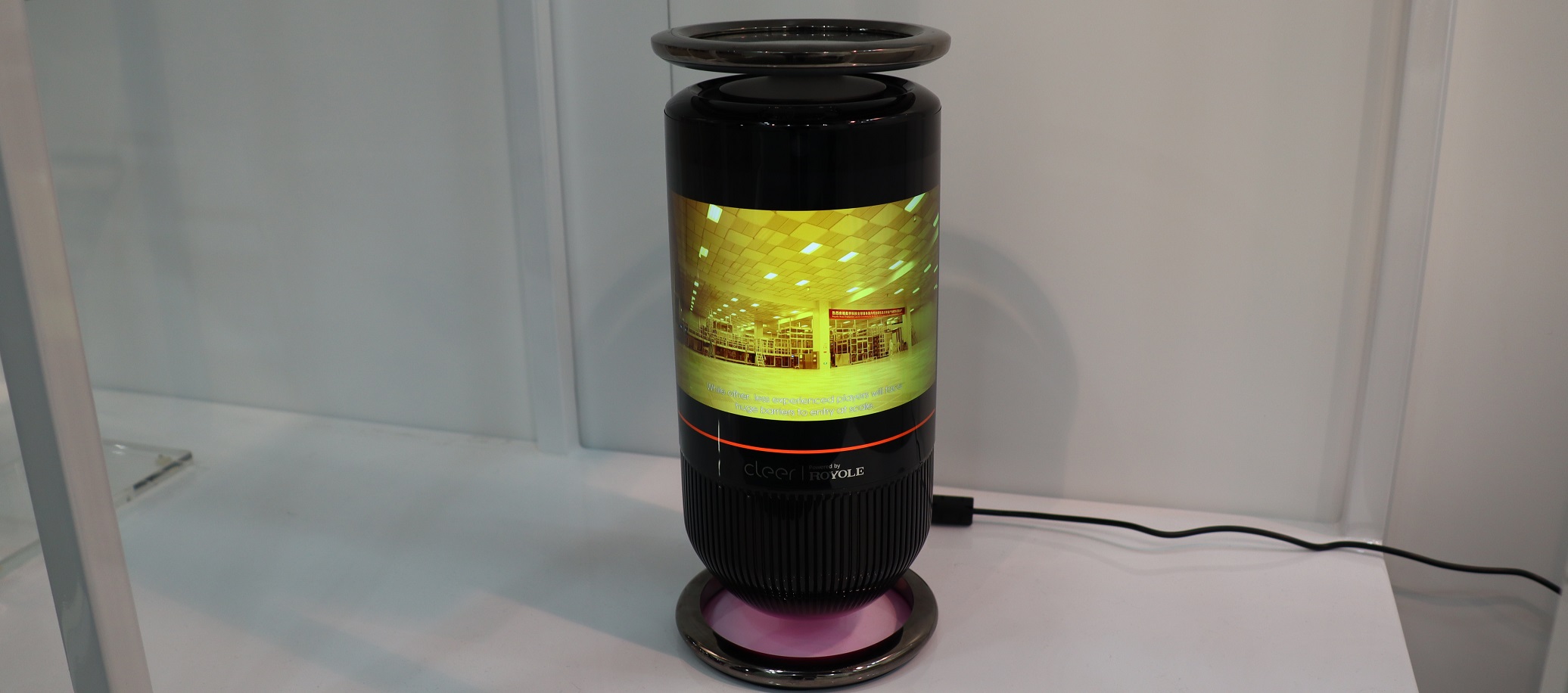Early Verdict
Pros
- +
Neat application of curved displays
- +
Solid construction
- +
Admirable volume
Cons
- -
Prohibitively pricey
- -
Limited interface
- -
No smart assistant integration?
Why you can trust TechRadar
At CES 2020, we got our first look at the Royole Mirage Smart Speaker, which packs an AMOLED display wrapped around its sound-blasting cylindrical body. And while it boasts admirable audio and video, the unit’s hefty $899 / £799 (around AU$1,309) pricetag will surely scare off consumers who don't want to pay laptop-level prices for audio.
A clarification: the Mirage Smart Speaker is officially a collaboration between Royole and Cleer Audio, but it’s unclear what Royole contributed beyond the 7.8-inch display. That’s exactly the size of the screen on the Royole FlexPai, the company’s foldable phone, and we don’t have any reason to assume it isn’t the same display.
Which isn’t a criticism, as this shows how versatile the display actually is, and if it was simple to install in the Mirage, it could be easy to integrate into other gadgets. Of course, that leaves whether adding a curved display on the Mirage is worth its high price tag, which is many times the cost of flat smart screens like the Amazon Echo Show or Google Nest Hub Max.

Yes, you can customize the light glowing below the cylindrical body.


Camera open...

...and camera closed.
It’s not the fairest comparison since the Mirage’s audio manages a range and volume that might exceed cheaper smart screens; on the other hand, stretching a display so far around the Mirage’s body means it’s impossible to see the whole thing at once - which isn’t ideal for sedentary binging, but expansive viewing angles could be handy for watching a cooking video while rotating around the kitchen.
Thus, it’s hard to pinpoint the Mirage’s value, as it seems more niche than other smart displays. Objectively, it’s a robust device that’s composed of two parts: a glossy cylinder that sits suspended a couple inches above the base, and a solid (and we mean solid - it won’t tip over) metal spine that supports the speaker body, running along its length before splitting into a circular ring at the bottom.
The spine ends in another ring at the top that holds a translucent disk with touch controls for volume, microphone on/off, and an undefined ‘action’ button. A 5MP camera sits at the top of the cylinder, which you can manually cover and uncover via a slider - presumably, this is for video chatting, though that might be a bit more awkward on a curved screen.

It’s not clear what that action button does, adding to the sense that Royole and Cleer rushed to get the Mirage to debut at CES. Representatives at Royole’s booth only got units the day the show began, so details were very scarce. The software interface in particular was unfinished and missing some functionality.
Sign up for breaking news, reviews, opinion, top tech deals, and more.
That interface is pretty basic, and navigating it felt more akin to an in-flight entertainment system than a fleshed-out Android tablet. Given the scarce details, it’s unclear which operating system the Mirage runs. It wasn’t too finicky, but it wasn’t smooth, either – much like how it felt to run through the initial Royole FlexPai phone at last year’s CES.
The display is fine, and seems a lot like that on the FlexPai: sharp enough and bright, though a bit too vibrant. Its touch capabilities work well, as expected, allowing us to touch and drag to either side for fast-forwarding/rewinding. If you're not big on touch control, Mirage also supports Amazon's Alexa.


Audio-wise, the Mirage packs three 48mm full-range drivers paired with a passive radiator, all rated at 30W RMS. There are two mics for far-field voice recognition. Specs-wise, the Mirage's display runs off a Qualcomm APQ8053 (aka Snapdragon 625) chipset paired with 2GB of RAM and 16GB of storage, though it's unclear how much you'll be able to save on-device.
Our short time with the Mirage left us with an appreciation for the density of the device - it’s heavy enough you won’t accidentally knock it over - but we remain curious as to its target demographic. The glossy black plastic and metal made it feel more welcome in a hotel lobby or an executive office than a home or dorm. But that perspective is just as much informed by the cost - casual consumers won’t pay laptop prices for a speaker, and if they are, that’s Sonos and Bose territory.
In sum, the Mirage feels more like a niche product than a consumer solution, and belongs in Royole’s expanding array of crossover products featuring its flexible displays, like the dual-screen Louis Vuitton bag that debuted in 2019. The Mirage will be available in Q2 2020 and will ship to the US and UK, though other region availability is unclear.
- Check out all of TechRadar's CES 2020 coverage. We're live in Las Vegas to bring you all the breaking tech news and launches, plus hands-on reviews of everything from 8K TVs and foldable displays to new phones, laptops and smart home gadgets.

David is now a mobile reporter at Cnet. Formerly Mobile Editor, US for TechRadar, he covered phones, tablets, and wearables. He still thinks the iPhone 4 is the best-looking smartphone ever made. He's most interested in technology, gaming and culture – and where they overlap and change our lives. His current beat explores how our on-the-go existence is affected by new gadgets, carrier coverage expansions, and corporate strategy shifts.
What is a hands on review?
Hands on reviews' are a journalist's first impressions of a piece of kit based on spending some time with it. It may be just a few moments, or a few hours. The important thing is we have been able to play with it ourselves and can give you some sense of what it's like to use, even if it's only an embryonic view. For more information, see TechRadar's Reviews Guarantee.
